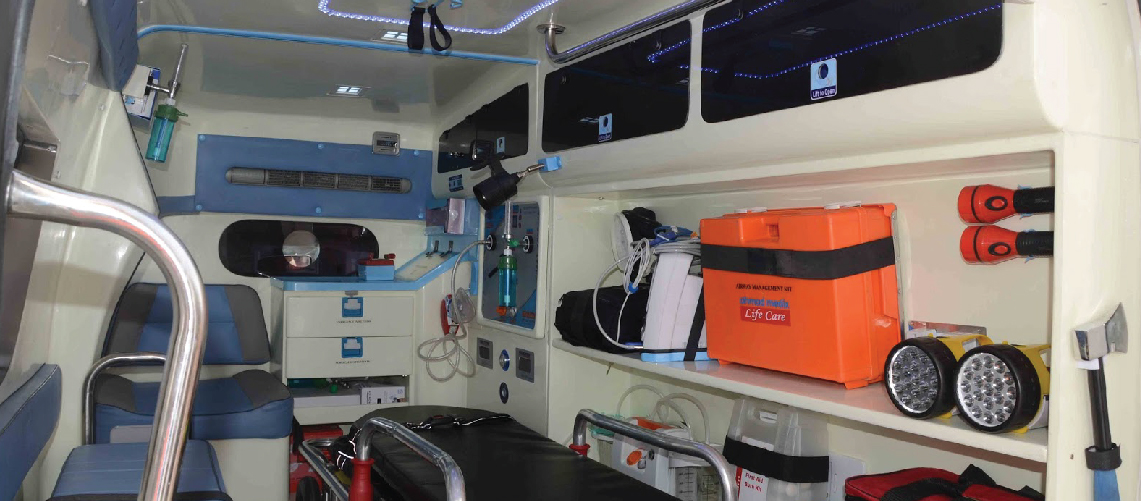Ambulances are an integral core of medical transportation services catering to the healthcare requirements of various patient age-groups. It is usually perceived that ambulance services are meant to be availed only in medical emergencies. That’s not true!
Ambulances may be used as a reliable mode of Long Distance Medical Transportation (LDMT) if the patients have to undertake long journeys or have medical needs that make them incapable of travelling in a normal vehicle. LDMT Ambulances assist in transporting patients in a personalized manner ensuring complete safety and comfort during the long travel.
Types of Ambulance Services
- Transport Ambulance Services
These may be used both for short and long distances for getting optimum care on wheels. These services are useful for patients with limited or no physical mobility, particularly seniors, who need clinical monitoring during transit.
- Basic Life Support (BLS) Services
These ambulances provide basic life support services to patients with skilled nurses.BLS ambulances are equipped with automatic external defibrillator, blood pressure monitoring devices, pulse oximetry and oxygen delivery services needed for stabilizing the patient until they reach the hospital. Blood transfusions, oxygen supply and emergency medications can be handled onboard.
- ACLS Ambulance Services (or mobile Intensive Care Units (ICUs))
Advanced Cardiac Life Support (ACLS) ambulances are upgraded versions of standard ambulances. They give specialized medical care to heart patients and victims of heart attacks with support of a dedicated intensive care support team. These patients need extra care for ensuring adequate blood circulation and ventilation. ACLS ambulances also handle cases associated with cardiac arrests like cardiac arrhythmias, strokes and food poisoning. They are supported by provision for Advanced Life Support (ALS) assessment for ensuring sufficient stock of necessary healthcare supplies so that the patient is escorted cautiously without any hassles. Stocks include Intra-Venous (IV) supplies, cardiac monitor, intubation equipment and ventilator.
- Mother and Child Ambulance Services
These are maternal ambulances exclusively designed to accommodate the transport needs of both mother and babies. Various configurations for specialized paediatric care and emergencies include
- Neonatal Ambulance
These are specially constructed to handle and transport the newborn babies in precarious health conditions to hospitals or homes with utmost safety and comfort. The services rendered are aided with relevant medical equipment like radiant warmers, resuscitation systems, neonatal ventilators, oxygen cylinders, auto-loading stretchers and phototherapy devices. These ambulances deploy extra care for minimizing vibrations and sounds for safe transit of new-borns.
- Paediatric Ambulances
These ambulances offer paediatric emergency services. They may be availed for safely transporting a child suffering from a critical illness or injury to hospital. It is particularly useful when the child requires incubator transport methods.
Types of Surgeries on Ambulances
Performing surgeries on ambulances is difficult due to constraints of space and infection control mechanisms. However, patients who are critically ill or injured often need access to enhanced clinical intervention.
To combat with over-crowded hospital emergency units, ambulances may be transformed to mobile Operation Theatres (OT) for providing extended care with advanced practices. In-house equipment include operation table, anaesthesia machine, cautery machine, patient monitors and defibrillators for performing basic surgeries. Licensed paramedics enhance care levels by carrying out surgical invasive procedures in medical emergencies like
- Surgical Airway (Cricothyrotomy/Tracheostomy)
A life-saving procedure done on the neck front to ensure an open airway between the patient’s lungs and outside world for breathing.
- Simple Thoracotomy
Used for gaining access to thoracic organs (heart, lung, oesophagus), thoracic aorta or anterior spine. It is usually used in chest decompression.
- Craniotomy
A brain surgery done in certain life threatening situations to handle increased intercranial bleeding.



